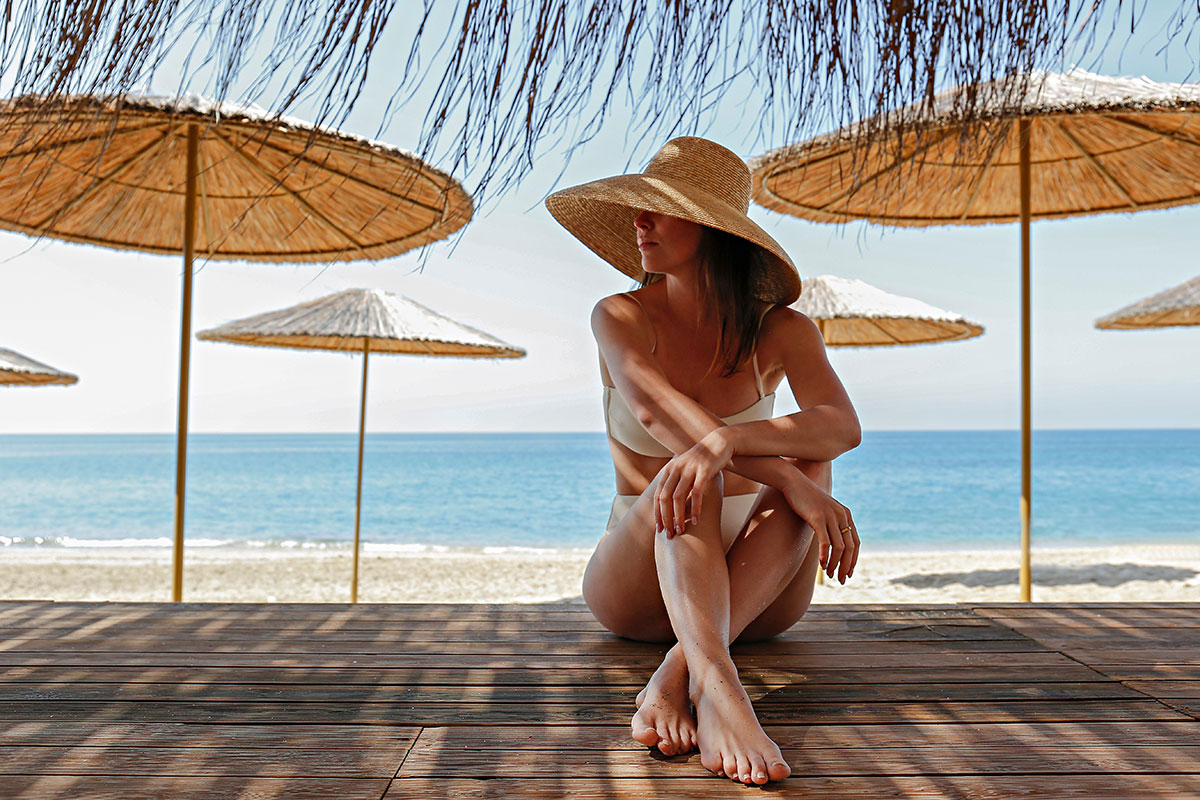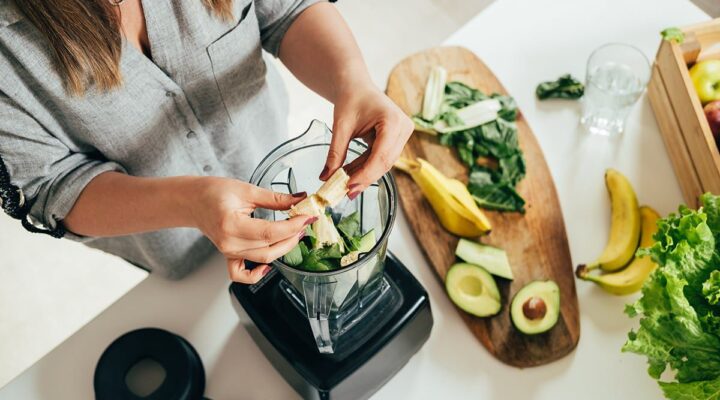How Dangerous Is It to Sunbathe Without Wearing SPF?

Ah, the joy of basking in the warm summer sun and feeling the rays on our skin. There’s truly nothing better. But what’s not so great? Dealing with a painful, full-body sunburn that has you wincing in agony for days
In recent years, melanoma, the most dangerous type of skin cancer, has been on the rise. Cancer charities have been sounding the alarm, emphasising that most cases could be prevented with proper skin protection. Despite this, many of us still head out into the blistering midday sun without slathering on enough SPF.
Sure, a bad burn might initially cause some embarrassment. But beyond a few days of resembling a bright red lobster, should we really be concerned about the lasting damage it can inflict? And just how risky is it to indulge in some tanning without applying sun cream?
To shed light on these questions, we reached out to expert dermatologists to find out more about UV skin damage and its connection to more serious health issues.

What happens to our skin when we burn?
The sun emits two types of damaging UV rays: UVA and UVB. These ultraviolet rays aren’t great news for our skin, damaging both its surface and the deeper layers underneath.
“UVB radiation, the type that causes sunburn, only penetrates as far as the top layer of the skin, known as the epidermis,” explains Dr Hiva Fassihi, Consultant Dermatologist at OneWelbeck Skin Health and Allergy (onewelbeck.com). The good news, Fassihi says, is that it can be blocked by clothing and even glass, so we’re not constantly exposed to it.
UVA is a different story. These rays penetrate much deeper into the skin. “UVA is responsible for causing skin photoaging, which can result in a loss of elasticity, wrinkles, broken blood vessels and pigmentation,” explains Fassihi.
The worrying thing about UVA radiation is that it’s not blocked by clouds, and it can penetrate through windows and thin clothing. So even on a gloomy day or when you’re chilling indoors, you’re still at risk of sun damage.
Perhaps unsurprisingly then, Fassihi says that we should take measures to protect ourselves from both UVA and UVB all year round, and not just during the sunny summer months.
How safe is it to go tanning without SPF on the skin?
You’ve probably seen those viral TikTok videos touting the supposed perks of sunbathing, claiming they can miraculously cure seasonal affective disorder (SAD), relieve stress, and even magically treat skin conditions like acne. But here’s the deal: the risks outweigh the benefits, and it’s important to know the facts.
According to experts like Fassihi, there’s “no such thing” as a safe tan, as “UVR causes both direct and indirect damage to the DNA in our skin cells.” DNA serves as our body’s genetic blueprint, guiding cell growth and function. When DNA damage occurs, it can disrupt the normal cell cycle and increase the risk of mutations, potentially leading to skin cancer.
When our skin tans, it’s actually a defensive response. The darkening of the skin is a result of our body releasing a pigment called melanin as a protective measure against further damage from UV radiation. In other words, a tan is a clear sign that our skin has already sustained damage, and the body is trying to shield itself.
But let’s talk about sunburn, which is even worse than a tan. Fassihi stresses the importance of “avoiding sunburn at all costs”, as it significantly raises the risk of various types of skin cancer, including melanoma, basal cell carcinoma, and squamous cell carcinoma.
BCC and SCC are the most common types, and while melanoma is less common, it is the most dangerous and can spread to other parts of the body if it’s not detected and treated early.

Are there any skin types or age groups that are more at risk than others?
“People who are fair-skinned with lighter eye colours and freckles have a higher risk of skin cancer,” notes Fassihi. This is because they tend to have less melanin, the pigment that provides some natural protection against UV radiation.
But here’s the thing: Even if you tan and don’t burn, UV exposure can still heighten your risk of developing skin cancer. There are other factors to consider too. According to Dr Katie Lacy, Consultant Dermatologist at OneWelbeck Skin Health and Allergy, individuals with a family history of melanoma, those who are older, live in sunny climates, or work outdoors also face an increased risk.
“Childhood sunburn incidents can have long-lasting effects and substantially increase the risk of skin cancer over an individual’s lifetime, so it’s really important to protect children with a high spectrum SPF,” adds Lacy.
The number of sunburns we get can truly make a difference when it comes to our risk of developing melanoma down the line too. The more blistering sunburns we’ve endured throughout our lives, the greater our risk of melanoma.
How can we protect ourselves from burning?
Rates of skin cancer are expected to climb by 9% by 2040, despite the fact that a staggering 86% of all cases can be prevented, says Cancer Research UK.
“I encourage my patients to wear sunscreen every day, regardless of how bright and sunny it appears outside. It is important to remember that UVA, the main cause of skin ageing, is present all year round, even on dull days,” says Lacy.
When you’re on the hunt for suncream, make sure you choose a bottle with not only a high SPF, but also at least 4-star UVA rating. “The sunscreen should be applied generously after cleansing in the mornings, and care should be taken to cover all exposed parts of the face and neck, including the delicate skin under the eyes.”
Waiting until you feel the sunburn creeping in and then slathering on sunscreen won’t do you any favours though. “Many people don’t apply their sunscreen 20 minutes before going out as recommended. Instead, they wait until they start to sunburn and then apply. By that point, it is too late. The damage is done.”
As for reapplication, it depends on how active you are and how much sun exposure you’ll be getting. “For example, on a dark wintery day in the office, the application of sunscreen in the morning as part of your skincare routine is likely to suffice. On a bright sunny day, with a lunchtime run planned, I would recommend reapplication of your sunscreen 30 minutes before going out.”
If you’re planning to spend the entire day outside, it’s wise to reapply your sunscreen every two to three hours. ”The newer spray-on mists are really easy to reapply and won’t disturb makeup if you happen to be wearing any,” says Lacy.
She adds that the reason dermatologists stress reapplication is not because the sunscreen filters stop working after two hours. “In fact, sunscreens are becoming more sophisticated and many of the filters are now photo-stable (they don’t break down in sunlight) for up to eight hours. The issue lies in the initial application, where we might miss certain spots on our skin, and physical activity or swimming can cause the sunscreen to rub off. That’s why I always recommend a reapplication every couple of hours while you’re out and about.”
Finally, for optimal protection, remember that sunscreen should be part of a larger sun-smart approach. This means avoiding the scorching mid-day sun, staying hydrated with a water bottle, and covering up with a hat and some long-sleeved clothing. No sunburn, no problem.


















